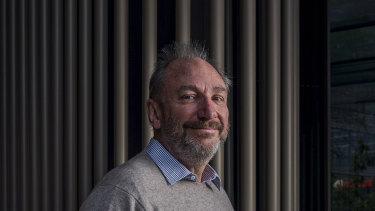Telstra chairman vows to protect dividend, calls for simpler pay model
Telstra chairman John Mullen says the telco will do whatever it takes to secure its 16¢ dividend for investors but has rejected the idea that its management should be judged solely on the company’s share price performance.
Mr Mullen told shareholders at Telstra’s first-ever virtual annual general meeting on Tuesday that the telco was reviewing the rule which would cause its dividend to drop. Telstra has been a steady source of dividend payments for retail shareholders, however, the telco has had to trim its total dividend payment down from 31¢ in 2017 to 16¢, as the NBN weighs down its overall earnings.
Under its existing policy, Telstra pays a dividend of 70 to 90 per cent of underlying earnings. However, Telstra’s annual results in August, which revealed a 14.4 per cent drop in net profit for full year 2020 and a 6 per cent fall in total income to $26.2 billion, had raised concerns among shareholders about the future of its payouts.
“The board clearly understands the importance of the dividend and if necessary is prepared to temporarily exceed our capital management framework principle of paying an ordinary dividend of 70-90 per cent of underlying earnings to maintain a 16¢ dividend,” Mr Mullen said.

Telstra shares have slipped close to 20 per cent since the start of calendar 2020, from $3.58 a share in January to close at $2.89 on Tuesday. They have also almost halved in value over the last five years.
Mr Mullen, who was grilled by shareholders at the AGM about the sharp fall in Telstra’s share price, acknowledged that the telco’s numbers had failed to hit the mark in recent years. However, he added the share price performance didn’t adequately reflect the work done by Telstra’s management.
“Share price cannot be the only metric by which we evaluate management’s performance. I fundamentally reject that,” Mr Mullen said. “External factors can mean you have a reduction in share price despite outstanding management performance just as you can have an increase in the share price despite mediocre management performance.”
MST Marquee analyst Fraser McLeish is confident Telstra will pay the full 16¢ dividend to investors next financial year.
“I thought there were encouraging comments that they made around setting the framework to be able to sustain the dividend and what needs to happen. Quite clearly the intention is to do whatever they can to sustain the dividend, I forecast that they can maintain the dividend at 16¢ a share.”
Mr Mullen, who was re-elected as Telstra’s chairman at the meeting, also called for a simpler model for executive pay after several key leaders including chief executive Andy Penn missed out on $758,000 worth of incentives last financial year because of poor sales practice in several stores primarily with vulnerable customers in the Northern Territory.
“Our view in these matters is that the responsibility ultimately stops with the company’s leadership and the board’s decision on remuneration outcomes for Andy [Penn] and two of his executive team reflected that while there was no specific adverse conduct by them personally, they were ultimately accountable,” he said.
Due to factors related to the crisis, Mr Penn and other executives also missed out on underlying earnings and net promoter score (NPS) targets affected by a fall in customer experience.
“I do wonder if it is time to consider a simpler model going forward,” Mr Mullen said. “I sometimes wonder whether we should not go back to those days and just give senior executives a fixed salary, the majority of which would be paid in shares so that if the company’s shares perform well then the executive would earn more and if they perform badly the executive would earn less.”
When asked directly about Telstra’s intentions with infrastructure arm InfraCo, Mr Mullen would not rule out a merger with NBN Co once it is privatised.
“We don’t envisage an enventual merger. but we do envisage a situation where opportunities for Telstra Infraco and the NBN to have some form of interaction, cooperation or even possible merger one day,” he said. “The future of the NBN is in the hands of government and all we can do is be prepared for any eventualities that may occur.”
Mr McLeish said a merger of the two would make sense operationally, but was dependent on the valuation of the two companies and the national broadband network meeting government targets.
“There’s a lot of water to go under the bridge, but ultimately operationally it would make a lot of sense.”
Mr Mullen’s commentary was very different to his presentation last year and in 2018. Last year Mr Mullen slammed critics of Mr Penn’s $5 million-a-year pay packet and argued kids playing popular video game Fortnite, social media influencers and professional athletes are paid similar sums of money. In 2018, Telstra shareholders revolted with 62 per cent voting against the company’s remuneration report.
“It was very pleasing this year to see broad support from proxy advisers and others for our approach to executive remuneration which, as I have said many times, is a responsibility the Telstra board takes incredibly seriously,” he said. Mr Mullen was re-elected as chairman but nearly 4 per cent of shareholders voted against him.
Mr Mullen and Mr Penn both confirmed Telstra would push ahead with its T22 strategy despite the change in market conditions this year.
Business Briefing
Start the day with major stories, exclusive coverage and expert opinion from our leading business journalists delivered to your inbox. Sign up for the Herald‘s here and The Age‘s here.
Zoe Samios is a media and telecommunications reporter at The Sydney Morning Herald and The Age.
Most Viewed in Business
Source: Thanks smh.com